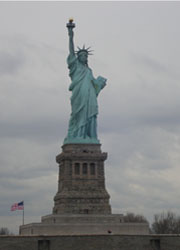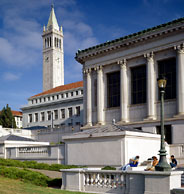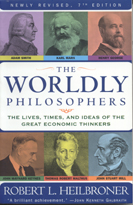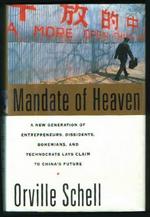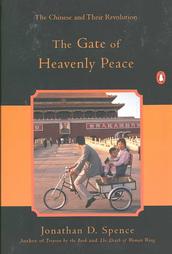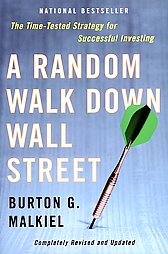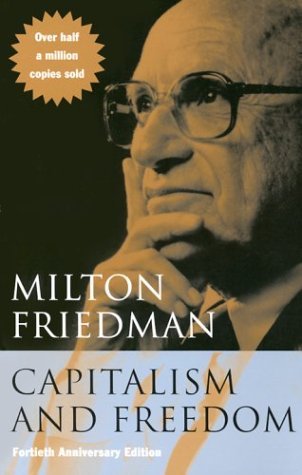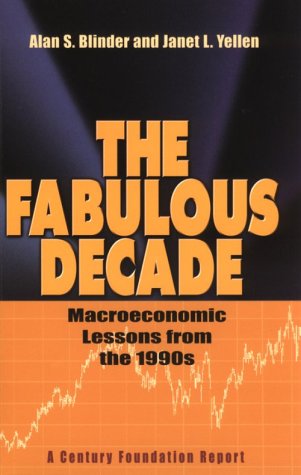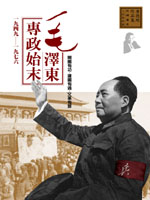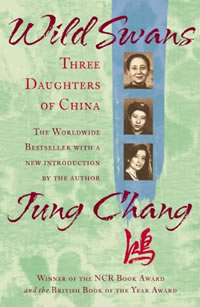Economist Milton Friedman Dies at 94
From AP
Milton Friedman, the Nobel Prize-winning economist who advocated an unfettered free market and had the ear of Presidents Nixon, Ford and Reagan, died Thursday. He was 94.
Friedman died in San Francisco, said Robert Fanger, a spokesman for the Milton and Rose D. Friedman Foundation in Indianapolis. He did not know the cause of death.
In more than a dozen books and in his column in Newsweek magazine, Friedman championed individual freedom in economics and politics.
His theory of monetarism, adopted in part by the Nixon, Ford and Reagan administrations, opposed the traditional Keynesian economics that had dominated U.S. policy since the New Deal. He was a member of Reagan’s Economic Policy Advisory Board.
His theories won him a Nobel Prize in economics in 1976.
Bank of China, Sinopec to Join Hang Seng Stock Index
From Bloomberg By Hanny Wan and Darren Boey
Bank of China Ltd. and China Petroleum & Chemical Corp., known as Sinopec, will be added to Hong Kong’s Hang Seng Index after a quarterly review of the stock benchmark, the compiler said.
The number of constituents on the Hang Seng will rise to 36
from 34, HSI Services Ltd. said in a statement after the market
closed today. No deletions were announced. The changes will take
effect on Dec. 4, the index provider said.
Bank of China and Sinopec, so-called H shares of companies
incorporated in mainland China, had been tipped for inclusion by
brokerages such as Nomura International (Hong Kong) Ltd.
The addition reflects the Chinese companies’ growing
presence on Hong Kong’s stock market. The exchange’s Web site
shows H shares at the end of October accounted for 21 percent of
the value of the main board, up from 1.5 percent at the end of
1997, the year the U.K. returned Hong Kong to China.
Bank of China and Sinopec’s inclusion “is evidence that H-
shares are getting more important,” said Kent Yau, deputy head
of research at Core-Pacific Yamaichi International in Hong Kong.
“If you look at the trading volume of H shares, they’re getting
bigger and bigger.”
The number of Hang Seng members will be gradually increased
to 38 to include H shares, HSI Services said in June. China
Construction Bank Corp., the nation’s fourth-largest lender, was
the first H share to join the stock benchmark after the index
compiler’s August quarterly review.
Shares of Bank of China, the nation’s second-largest lender,
have climbed 16 percent since they were sold in an initial public
offering at the end of May. Sinopec, Asia’s largest oil refiner,
has surged 47 percent this year.
“Bank of China was a bit of a surprise,” Yau said. “Short
term it’s going to get a boost. It’s positive news. Investors will
probably start to accumulate” before the changes take effect.
HSI Services determines constituents based on criteria such
as market value and trading volume. Adjustments would prompt
funds that mirror the stock benchmark, such as the $3.4 billion
Tracker Fund of Hong Kong, to buy stocks that are added.
Exchange-traded funds may have to buy HK$475.3 million
($61 million) of Sinopec shares and HK$579.4 million of Bank of
China shares in response to the inclusion in the Hang Seng, Sandy
Lee, an analyst at Nomura, said in an e-mail after HSI Services’
statement was released.
Bank of China has a market value of HK$851 billion, behind
HSBC Holdings Plc and China Mobile Ltd. among existing Hang Seng
Index members.
Sinopec, Asia’s biggest refiner, is valued at HK$562 billion,
which would put it behind Construction Bank, currently the
measure’s third-biggest company.
HSI Services also said it will start an index to measure the
H shares of Chinese financial-related companies from Nov. 27. The
Hang Seng China H-Financials Index will track five lenders
including Bank of China and Construction Bank, and three insurers
such as China Life Insurance Co.
New Design and Ad Rate Set for Time Magazine
For years Time magazine had a seemingly insurmountable lead in circulation over other weekly news magazines, but now that lead is narrowing.
Time said yesterday that starting in January it would cut its rate base — the number of readers it guarantees to advertisers — by 18.8 percent, to 3.25 million, from 4 million. The advertising rates charged by a magazine generally rise and fall based on that number.
But Time also said it wanted to persuade advertisers to switch to a new way of paying for ads, based on the total number of magazine readers, including those who read someone else’s copy. On that basis, Time says it has 19.5 million readers.
Time also said yesterday that it would increase its newsstand price by $1, to $4.95, starting in January. About 116,000 copies of the magazine are sold on average at newsstands.
Editors at Time are working on a redesign to be introduced in January, along with a change in the day the magazine hits newsstands, to Friday from Monday. Also, 800,000 of what Time determines to be its wealthiest readers will receive added style, travel and leisure content once a month. Time will pitch that magazine version to high-end advertisers.
The magazine’s announcement comes after months of tumultuous changes at Time, part of the Time Inc. division of Time Warner. Time Inc. has reduced the staff at all of its publications by 550 in the last year.
This year Time hired a new managing editor, Richard Stengel, with a mission to reinvent the magazine. It also hired Josh Tyrangiel to revive its Web site. Time and other weekly magazines have struggled to stay relevant against the Internet, cable channels and daily news.
Time’s publisher, Edward R. McCarrick, said the changes represented a monumental shift in magazine accountability. Some in the media industry have said that ads should be sold based on estimates of the total number of people who read a magazine, a system that would be similar to TV ratings.
Currently, magazine ads are sold based on the number of people who subscribe or buy the magazine on the newsstand. Mr. McCarrick said if advertisers agreed to switch to the new system, Time advertisers would be able to purchase space in the magazine based on a guaranteed number of 19.5 million readers starting next year, and the way the rate would be calculated would give advertisers more for their money.
“I don’t think the number of readers has gone down. That’s a number we are comfortable guaranteeing,” he said. “We’re doing something really bold and direct, which is throwing down the gauntlet.”
Previously, Mr. McCarrick said, Time’s rate base counts included people who received magazines through a variety of channels that other publications still use, including magazines sponsored by advertisers and sent out unrequested.
Earlier this year, the Audit Bureau of Circulations, which reports magazine circulation, began requiring magazines to break out the number of magazines in their circulation that go to places like doctors’ offices. Time magazine’s figure for such magazines was 350,623 out of about 4.1 million magazines sold in the first half of this year.
Newsweek magazine, in contrast, did not have such copies to report. Richard M. Smith, editor in chief of Newsweek, which is owned by the Washington Post Company, said he knew that Time had been looking at its rate base numbers for a while, just as his own magazine had.
“We continue to look carefully at the rate base, and I think for everyone in the magazine business the postal rate increases have been dramatic over the last few years, and we’re facing another increase of 12 percent in 2007. So that forces you to look at the economics of your circulation,” he said. “The other thing is, for both Time and Newsweek, the Web has provided both a very large audience and substantial advertising revenues.”
Time’s total circulation was up about 1.2 percent in the first half of this year compared with 2005. In contrast, the circulation of Newsweek fell 1.8 percent in the first half of this year, to about 3.1 million.
Some in the industry said Time’s reduction in its estimated readership was not surprising. Other magazines, including Reader’s Digest and Playboy, have also cut their base rates as circulations declined.
“Magazines are evolving to a kick-back medium from a news medium,” said Joe Mandese, editor of MediaPost in New York, an online and print trade publication. “Time is saying with the change that it’s not a start-your-week publication, it’s a kick-back, over-the-weekend publication, and Time.com is for news.”
New Design and Ad Rate Set for Time Magazine
For years Time magazine had a seemingly insurmountable lead in circulation over other weekly news magazines, but now that lead is narrowing.
Time said yesterday that starting in January it would cut its rate base — the number of readers it guarantees to advertisers — by 18.8 percent, to 3.25 million, from 4 million. The advertising rates charged by a magazine generally rise and fall based on that number.
But Time also said it wanted to persuade advertisers to switch to a new way of paying for ads, based on the total number of magazine readers, including those who read someone else’s copy. On that basis, Time says it has 19.5 million readers.
Time also said yesterday that it would increase its newsstand price by $1, to $4.95, starting in January. About 116,000 copies of the magazine are sold on average at newsstands.
Editors at Time are working on a redesign to be introduced in January, along with a change in the day the magazine hits newsstands, to Friday from Monday. Also, 800,000 of what Time determines to be its wealthiest readers will receive added style, travel and leisure content once a month. Time will pitch that magazine version to high-end advertisers.
The magazine’s announcement comes after months of tumultuous changes at Time, part of the Time Inc. division of Time Warner. Time Inc. has reduced the staff at all of its publications by 550 in the last year.
This year Time hired a new managing editor, Richard Stengel, with a mission to reinvent the magazine. It also hired Josh Tyrangiel to revive its Web site. Time and other weekly magazines have struggled to stay relevant against the Internet, cable channels and daily news.
Time’s publisher, Edward R. McCarrick, said the changes represented a monumental shift in magazine accountability. Some in the media industry have said that ads should be sold based on estimates of the total number of people who read a magazine, a system that would be similar to TV ratings.
Currently, magazine ads are sold based on the number of people who subscribe or buy the magazine on the newsstand. Mr. McCarrick said if advertisers agreed to switch to the new system, Time advertisers would be able to purchase space in the magazine based on a guaranteed number of 19.5 million readers starting next year, and the way the rate would be calculated would give advertisers more for their money.
“I don’t think the number of readers has gone down. That’s a number we are comfortable guaranteeing,” he said. “We’re doing something really bold and direct, which is throwing down the gauntlet.”
Previously, Mr. McCarrick said, Time’s rate base counts included people who received magazines through a variety of channels that other publications still use, including magazines sponsored by advertisers and sent out unrequested.
Earlier this year, the Audit Bureau of Circulations, which reports magazine circulation, began requiring magazines to break out the number of magazines in their circulation that go to places like doctors’ offices. Time magazine’s figure for such magazines was 350,623 out of about 4.1 million magazines sold in the first half of this year.
Newsweek magazine, in contrast, did not have such copies to report. Richard M. Smith, editor in chief of Newsweek, which is owned by the Washington Post Company, said he knew that Time had been looking at its rate base numbers for a while, just as his own magazine had.
“We continue to look carefully at the rate base, and I think for everyone in the magazine business the postal rate increases have been dramatic over the last few years, and we’re facing another increase of 12 percent in 2007. So that forces you to look at the economics of your circulation,” he said. “The other thing is, for both Time and Newsweek, the Web has provided both a very large audience and substantial advertising revenues.”
Time’s total circulation was up about 1.2 percent in the first half of this year compared with 2005. In contrast, the circulation of Newsweek fell 1.8 percent in the first half of this year, to about 3.1 million.
Some in the industry said Time’s reduction in its estimated readership was not surprising. Other magazines, including Reader’s Digest and Playboy, have also cut their base rates as circulations declined.
“Magazines are evolving to a kick-back medium from a news medium,” said Joe Mandese, editor of MediaPost in New York, an online and print trade publication. “Time is saying with the change that it’s not a start-your-week publication, it’s a kick-back, over-the-weekend publication, and Time.com is for news.”
Russia Near Deal to Join the W.T.O.
Officials in Washington and Moscow reached an agreement in principle for Russia to join the World Trade Organization, crossing the final big hurdle in the stop-and-go cycle that has marked the process since Moscow began its application shortly after the collapse of the Soviet Union.
The deal is expected to be signed next Saturday, when both President Bush and President Vladimir V. Putin of Russia will be in Hanoi for an Asia-Pacific Economic Cooperation meeting, negotiators from both countries said. The White House also announced this week that President Bush planned to stop in Moscow on Nov. 15 on his way to Vietnam.
“We have agreement in principle and are finalizing the details,” the United States trade representative, Susan Schwab, said in a statement. “It is a clear indication of Russia’s efforts to participate fully in and benefit from the rules-based global trading system.”
Mr. Putin has repeatedly said that joining the 149-member W.T.O. was a major foreign policy goal, though Russia’s oil-driven economy will get few direct gains from membership in the organization, which sets the ground rules for globalization. But joining would give Russia a voice in world trade talks, with the potential to help set future trade policy.
“Russia today is the only major world economy outside the W.T.O. — the only one,” Mr. Putin said at a news conference early in his presidency, in June 2002. “Staying outside this organization, outside this process is dangerous and stupid.”
American officials say the countries gradually worked out nagging disputes on issues like agriculture inspections, chicken exports to Russia and intellectual property protection.
The Bush administration has other contentious issues with Russia, particularly its support for Iran and that country’s nuclear program. There was no immediate sign of any broader deal involving those issues.
One American official said that Russian negotiators had been a “moving target” back in July, balking on issues that Washington thought had been resolved. But they said Russian officials had become more forthcoming in recent weeks.
“At the bitter end, the issues were quite trivial,” said Gary C. Hufbauer, a trade policy expert at the Institute for International Economics in Washington, who has followed the negotiations.
Mr. Hufbauer suggested that Russian leaders might have decided to seal a deal out of worry that this week’s elections would mean greater resistance by Democrats to an accord. “I think the Russians read the election returns and realized that if they don’t go for it now, they might not get anything,” he said.
Russia still must win approval from Moldova and Georgia, countries with deep grievances over a Russian ban on importing wine, ostensibly for health reasons. Those countries could further delay any final deal on W.T.O. membership, which is expected to take place next year. Russian officials have said they want to join in 2007.
Georgia first approved Russia’s membership but rescinded it last month, after Russia blockaded its border. Maksim Medvedkov, Russia’s chief negotiator, said Friday in remarks carried on state television that he would not negotiate with Moldova and Georgia separately but try to allay their objections during multilateral talks with the W.T.O. in Geneva.
The European Union, China and Japan have already signed off on Russian membership.
American officials said they reached agreement on longstanding disputes about American exports of poultry, beef and pork. Russia is the United States’ biggest export market for chicken parts, but American producers have long complained about being hindered by Russian inspection procedures.
The agreement also calls for Russia to offer greater access for foreign services, from construction to overnight parcel delivery and telecommunications. Russian officials also agreed to allow banks and investment firms in Russia to be owned by foreign companies, meaning that foreign banks would not need to team up with Russian partners.
American trade negotiators accepted an unusual restriction on foreign players in the banking and insurance sectors, according to the trade representative office. It will limit foreign investment to no greater than 50 percent of total investments in these businesses. In Moscow, state television reported Friday that Russia was the only country in the W.T.O. to win this concession.
Russia also promised to step up enforcement of intellectual property rights, which had been carried out in spotty fashion.
Russian trade relations with the United States, while forming only a tiny share of both countries’ total foreign trade, have gone through some dismal periods. In 2002, President Bush imposed tariffs on steel, a major Russian export commodity, and Mr. Putin retaliated by banning imports of chicken thighs, known as “Bush Legs” because the product first arrived in Russia as food aid under the president’s father in the early 1990s.
In contrast to China, Russia’s oil-dependent economy gains little from joining the W.T.O. “China is a consumer goods manufacturer and exporter and there was a huge benefit for China,” said Peter Westin, chief economist at the MDM Bank. “There will be nothing like that for Russia.”
Instead, Mr. Westin and other economists say, the primary benefit for Russia would come in exposing the domestic banking, telecommunications and other sectors to more direct foreign competition. This should increase productivity.
Ford Motor, which produces about 70,000 cars a year in Russia and exports another 50,000 cars to Russia, said it was delighted by the deal. Over the next seven years, Russian duties on foreign-made cars are set to decline to 15 percent, from 25 percent today.
“What all this adds up to,” said Stephen E. Biegun, Ford’s vice president for international governmental affairs, “is that we will be able to grow as fast as we possibly can in Russia.”
